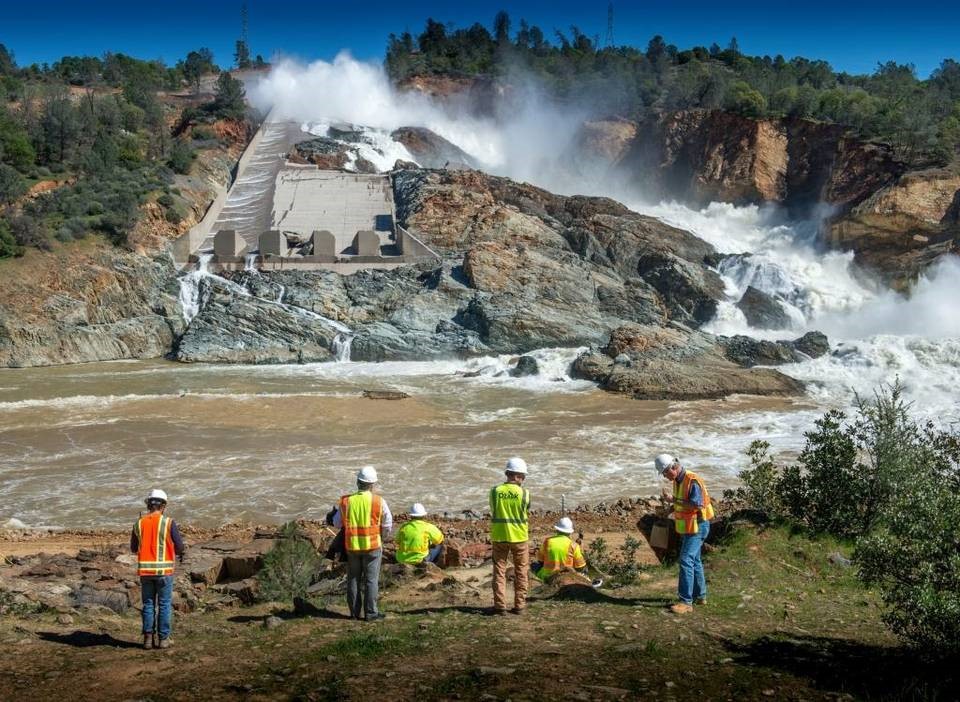Members & Activists,
This op ed by Jonas Minton, PCL’s Senior Water Policy Advisor, in the Sacramento Bee highlights why the investments needed to ensure a safe and reliable water supply for California should be directed to addressing our mounting backlog of repair and maintenance. The Planning and Conservation League is proud to have Jonas on our staff and to be advocating alongside him, and other water policy advocates, to maintain integrity and safety of California’s complex water infrastructure.
~Sacramento Bee~
Public needs answers on repairing Oroville dam, Delta levees and California Aqueduct
 By Jonas Minton, Senior Water Policy Advisor
By Jonas Minton, Senior Water Policy Advisor
Special to the Bee
April 6, 2017
The State Water Project is undoubtedly one of California’s most important infrastructure projects. It is one of the major water supplies for more than 25 million residents and irrigates up to 750,000 acres of farmland. But as it reaches its 50th birthday huge repair and safety costs are coming due. But is anyone paying attention?

Department of Water Resources workers check on the flow of the Oroville Dam’s main spillway on March 17, after water resumed flowing down the fractured main spillway.
Repairs to the Oroville Dam main spillway were initially estimated to be in the $100 million to $200 million range. The Department of Water Resources has already spent that much just in emergency response. Independent experts are now saying that the main and emergency spillways will have to be entirely redesigned and rebuilt.
The costs have not been estimated but are likely to be at least in the $500 million to $1 billion range. In addition it is likely that the water levels in the reservoir will have to be reduced for safety and to allow the reconstruction. That will reduce deliveries to water users.
Strengthening levees in the Sacramento-San Joaquin Delta is necessary to allow the water stored in Oroville reservoir to make it to the pumps in the south Delta. Even if the governor’s proposed Delta tunnels are ever built, about half the water diverted from the Delta will still have to pass by those levees. Those levees also protect three state highways, a major rail corridor and hundreds of thousands of acres of the world’s most productive farmland. The cost for upgrading those levees is in the range of $2 billion to $3 billion.
Just before the water can be pumped from the existing south Delta pumps it has to be gathered up through a reservoir known as the Clifton Court Forebay. Heavy pumping from the Delta in this very wet year risked failure of part of the dam for that Forebay. Costs for these repairs have not been published.
Once water is pumped from the Delta in the winter and spring most of it is stored in San Luis Reservoir for use later in the summer. Since 2006 it has been known that the 3½ half mile long dam could fail in a foreseeable earthquake. That would endanger more than 200,000 downstream residents. An early estimate put the cost of dam safety remediation at over a third of a billion dollars.
After water is released from San Luis Reservoir most if it flows south through the California Aqueduct in the San Joaquin Valley. Water moves through the aqueduct by a combination of pumping plants and gravity flow. This is the same area that is experiencing major ground subsidence (i.e. sinking) due to the over pumping of groundwater.
As the ground beneath the aqueduct sinks it loses some of the slope needed for the gravity flow to fully work. Already the aqueduct has lost 20 percent of its capacity. The Department of Water Resources has released no information on what will be required to restore this capacity or how much it will cost. It is reasonable to think tens to hundreds of millions of dollars.
The Oroville Dam emergency shows that California cannot ignore the multiple safety and financial threats to one if its most important water infrastructures. It is time for the Legislature and the public to find out when these repairs will be made, how much they will cost and who will pay.
Jonas Minton, former deputy director of the Department of Water Resources, is water policy adviser at the Planning and Conservation League. He can be contacted at jminton@pcl.org.
